Commentary: The fiery and icy weather of the West and East Coasts is no coincidence
Published in Op Eds
The Hollywood sign stands sentinel above Los Angeles, watching as embers dance through the January night like wayward stars. Glowing debris floats on warm winds past million-dollar mansions, while emergency crews battle a blaze that shouldn’t exist — not in winter, not here, not now.
Two thousand miles east, in the heartland of America, a different sort of emergency unfolds. The mercury plummets to depths not seen in a decade. Wind chills reach 40 below. Airlines ground flights by the hundreds. Roads become treacherous ribbons of ice. People huddle in warming centers, while the polar wind howls outside like a hungry ghost.
Fire and ice. A nation split in two.
We’ve been here before. The winter of 2013-14 wrote the first dramatic chapter of this story. California was gasping through its worst drought in 1,200 years — a drought so severe that it left America’s fruit basket withering on the vine. Meanwhile, the eastern United States was shivering through what the media dubbed “the return of the polar vortex.” The temperature swing between California and the East Coast that winter was unlike anything we’d seen in modern records.
That winter changed how we think about climate. At Utah State University, our research revealed something fascinating: The atmosphere was behaving like a river encountering a boulder. Just as water creates waves as it flows around obstacles, our atmosphere develops waves as it encounters mountains and patterns of ocean heating. These aren’t just any waves — they’re massive atmospheric ripples that can span continents.
Think of the jet stream — that river of air flowing high above our heads — as a cosmic garden hose. When it’s straight, it keeps weather patterns moving along normally. But lately, something has been making it wobble more dramatically. Earlier research found the culprit: The western Pacific Ocean has been warming significantly, creating an atmospheric domino effect that reaches all the way to North America.
Here’s how it works: That warmer western Pacific acts like a hot plate under the atmosphere, creating rising air that sends waves rippling eastward, like dropping a stone in a pond. These waves travel along the jet stream — a cosmic highway for these atmospheric disturbances. When these waves reach North America, they can get “stuck” in a particular pattern, creating persistent extreme weather on both coasts, or on one coast and in the Midwest.
By 2017, we saw another manifestation of this pattern, but with a twist. California swung dramatically from drought to deluge as atmospheric rivers — literal rivers of water vapor in the sky — pummeled the state. Then in January 2018, the eastern United States plunged into another deep freeze while the West remained stubbornly warm and dry. The pattern was becoming more pronounced, more persistent.
The evidence for this amplification isn’t just anecdotal. Our research has shown a roughly 20% increase in the strength of these winter weather extremes since the late 20th century. We can literally see it in the shape of the jet stream, which now regularly contorts into deeper waves than it did just a few decades ago. It’s like a river that once flowed relatively straight has begun to meander more wildly.
The physics behind this is clear. The warming of the western Pacific Ocean isn’t just a random fluctuation; it’s part of a larger pattern of climate change. This warming creates stronger “wave trains” of atmospheric energy that propagate along the jet stream toward North America. When these waves interact with our mountains and existing weather patterns, they create this persistent seesaw effect between the coasts.
And now, in 2025, we’re watching the same pattern play out again, but with even greater intensity. The Palisades fire has become Los Angeles’ most destructive winter fire in history, while the eastern United States faces its most significant winter storm in a decade. This isn’t a coincidence. It’s the same atmospheric pattern we’ve been tracking for years, flexing its muscles with unprecedented strength.
The changes we’re seeing aren’t subtle anymore. Our latest research has identified a specific atmospheric fingerprint that’s becoming more frequent and more intense across the western United States. It’s a distinctive three-part wave in the atmosphere that creates perfect conditions for fire, and it’s occurring more often since 1980, driven by warming in the subtropical eastern Pacific Ocean.
This pattern, known as a weather regime, does something insidious to the landscape: It dramatically increases the atmosphere’s thirst for moisture. When this weather pattern settles in, it’s not just a lack of precipitation that’s aggravating the drought: The atmosphere itself pulls water from soil, from vegetation, from everything, turning California’s landscape into a tinderbox. The pattern can persist for weeks, creating fire conditions even in what should be the wettest, coldest part of the year.
What’s particularly alarming is how this pattern reinforces itself. As the landscape dries, it heats up more easily, which strengthens the atmospheric ridge that caused the drying in the first place. It’s a vicious cycle that can turn winter into an extension of fire season. In 2014, this pattern was so intense that NASA satellites could see California’s mountains rising as the weight of water literally lifted from the landscape.
But understanding these patterns gives us power. In 2014, we were caught off guard. By 2017, we were better prepared, though the intensity still surprised us. Now, as 5 million Californians fall under red flag warnings while 60 million Easterners face winter storm alerts, we can at least see it coming. Weather forecasters can warn communities days in advance. Emergency managers can position resources before they’re needed. Communities can prepare.
The question isn’t whether these patterns will continue; our research shows they will. The question is how we’ll write the next chapter, how we’ll adapt to this new normal in which fire season knows no calendar, in which the very patterns of our atmosphere are being redrawn by a warming world.
Robert Frost once pondered whether the world would end in fire or ice. This winter, America doesn’t have to choose. Understanding our climate’s new patterns doesn’t make them any less dramatic, but it does give us a fighting chance to prepare for what comes next.
_____
Shih-Yu Simon Wang is a professor of climate science at Utah State University.
_____
©2025 Los Angeles Times. Visit at latimes.com. Distributed by Tribune Content Agency, LLC.






















































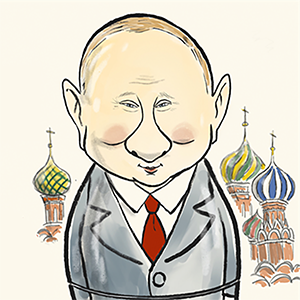

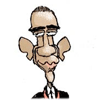
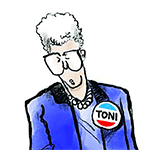
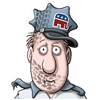
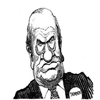
Comments